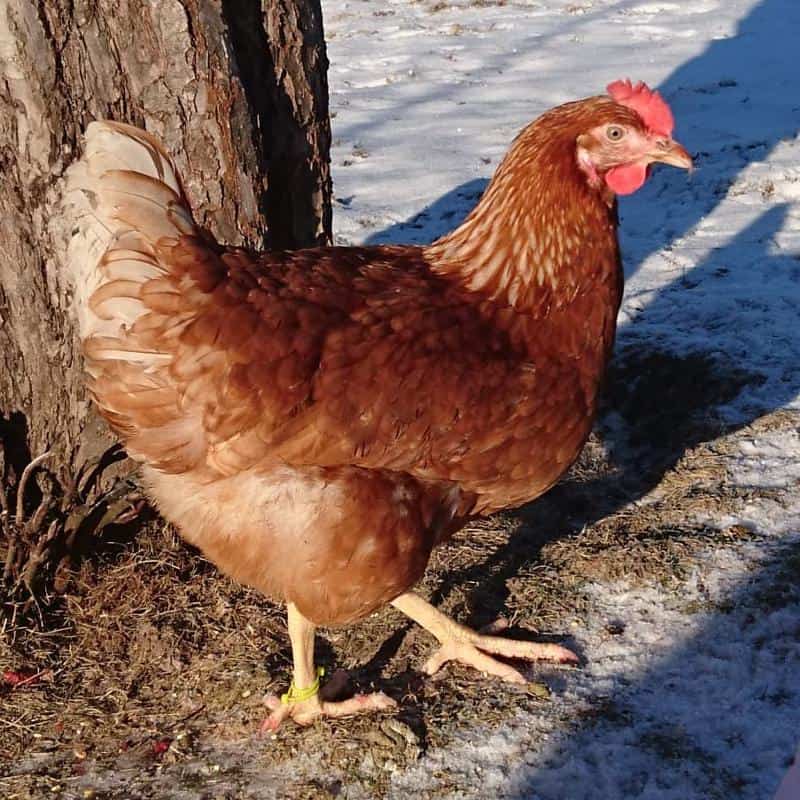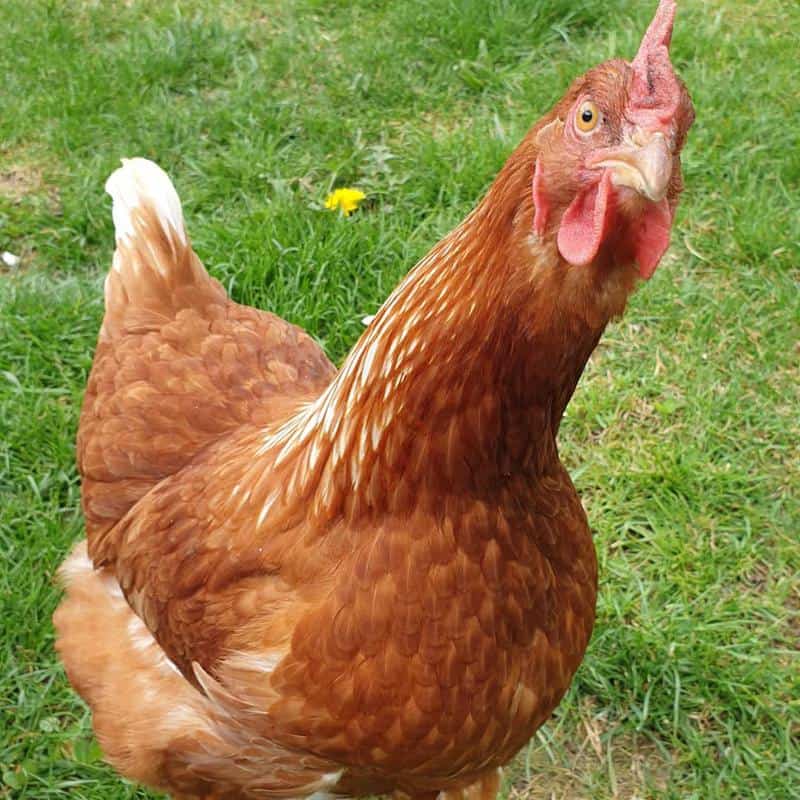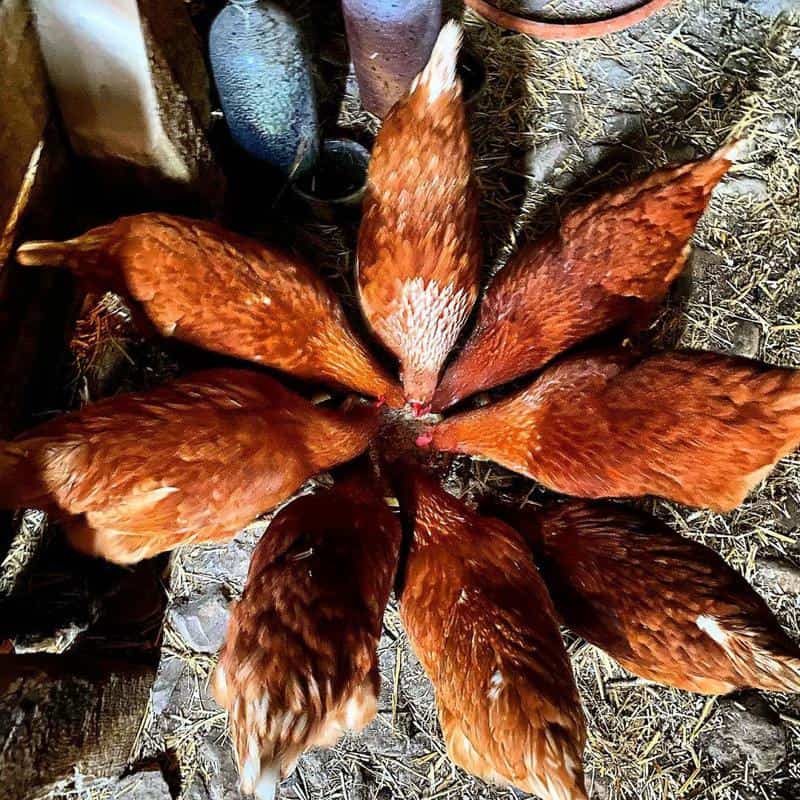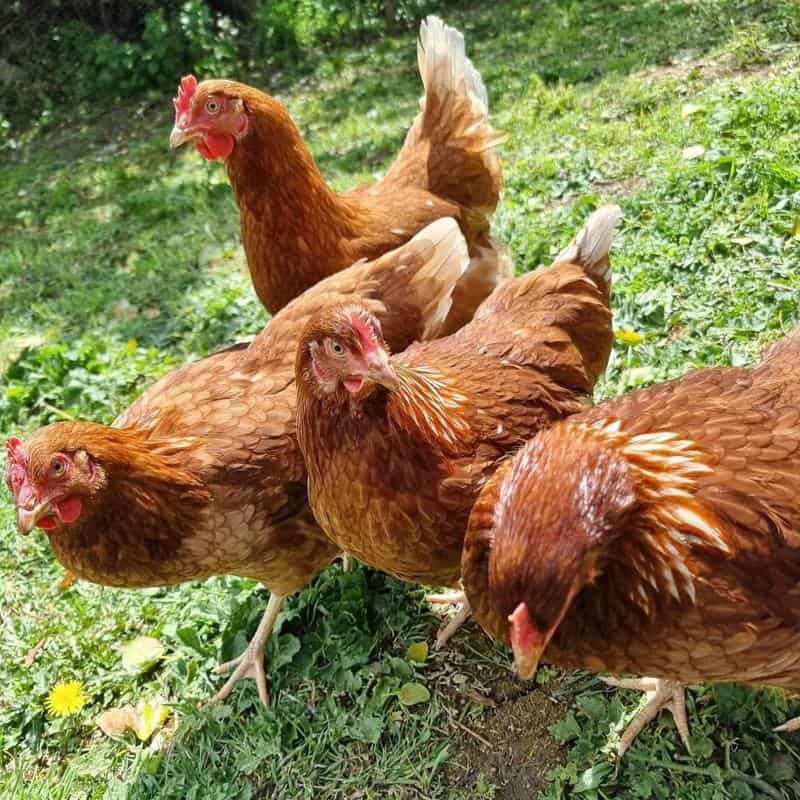If recent events are anything to go by, farming chickens for eggs can be a lucrative venture. While it’s great to have enough eggs for your table, when you have chickens that can produce a surplus of eggs, this can be profitable.
Not too long ago, a carton of eggs was being sold for as high as $5.46 and many people would like a chance to cash in on such opportunities.

Unfortunately, cashing in when there is a high demand for eggs is not as easy as getting a flock of random hens and collecting buckets of eggs every morning. There are many factors to consider when farming chickens for eggs and the type of chicken is an important one.
This is where Lohmann Browns come in. These chickens have become key to the world’s egg supply and their influence continues to grow.
Farmers are choosing Lohmann Brown hens for their farms because their egg production capabilities are backed by data.
Despite the presence of heritage breeds with long histories of egg production, this hybrid continues to steal the show. We explain how it manages to do this and what it takes to get the best out of Lohmann Browns.
Lohmann Browns’ Egg Production Capacity
In a single year, a Lohmann Brown hen will give you approximately 320 eggs. This isn’t an outlier; this is the standard that is expected of these hens when they reach their peak production age.
This means that these chickens are laying one egg almost every single day. This level of production is not seen in heritage chicken breeds.
Thanks to this high production rate, a flock of Lohmann Browns makes it easy to supply eggs consistently to your customers.
Additionally, the classic Lohmann Brown hen produces eggs that weigh 68.6 grams on average. This makes the eggs suitable for markets where customers prefer large eggs.
Lohmann Brown Vs Heritage Layers
In case you’re new to chicken farming, you may be wondering why you should get a Lohmann Brown and not a heritage breed. In reality, there are plenty of good reasons to get either and what is best for you will depend on what your farming goals are.
Here is a brief breakdown of the differences between Lohmann Browns and heritage breeds.
| Lohmann Brown | Heritage Layers | |
| Egg Production | Very High | Mid to High |
| Cost of Chicks | Mid | Can be high or very high depending on rarity and demand |
| Availability | High | Variable (Some breeds are common and others are critically endangered) |
| Hardiness | Low | High |
| Lifespan | 6 – 8 years | 8 – 10 years |
| Feed Conversion Rate | High | Low |
| Growth Rate | High | Moderate to Slow |
| Level of Care Needed | High | Low |
| Confinement | Thrives in confinement | Some breeds tolerate confinement, but heritage breeds usually prefer to free range |
| Getting New Chicks | Must be bought | Can be bred from current stock |
There are plenty of other differences that can be discussed between Lohmann Browns and heritage layers. However, one important difference that emerges from the table above is the level of predictability.
Because of how Lohmann Browns are bred, these chickens have a much higher level of predictability. Any farmer who buys Lohmann Browns knows what they’re expected to invest and how much they’re likely to get out of the venture before they start.
Predictability can be a challenge with heritage breeds because there are many different breeds with very different qualities. Secondly, there is little guarantee that the qualities you see on paper are exactly what you will get because they are different strains of individual breeds.
On the other hand, heritage breeds still have key advantages including being hardier, having longer productive lives, and the fact that they require less attention on a day-to-day basis.
Crucially, because they are true breeds, the offspring of heritage breeds will also have the same qualities as the parents. This means you won’t have to buy chicks every time you want to replenish your stock.
The History of Lohmann Browns
Lohmann Browns are a recent development in the world of chickens. These layers were introduced to the world in 1984 by the Lohmann Breeders company which was known then as Lohmann Tierzucht GmbH.
The Lohmann Breeders company itself had only been founded in 1959 when it started out as a distributor of the American “Nick Chick”.
Lohmann Brown chickens are a crossbreed, the result of breeding White Plymouth Rocks and Rhode Island Reds. The typical Lohmann Brown hen has caramel colored plumage and a pattern of white feathers around its necks and at the tip of its tail.
Data-Driven Performance

It may seem strange to bring up data analytics when discussing chicken farming, but this approach is one of the reasons why Lohmann Browns have been such a success.
Research-Backed Breeding
According to Lohmann breeders, they employ a system called quantitative genetics. This means that the chickens that are bred to produce the Lohmann Brown hybrids are not selected based on theories but based on data from the real world.
This approach is enabled by the significant power of modern data processing systems. The company is thus able to quickly take advantage of the latest findings to produce chicks that are well suited to meet the current market conditions.
Performance Data
Before you buy Lohmann Brown chickens, you can look at performance data that is freely available online from the breeders.
The data provided is extensive and includes information on how the hen can be expected to perform from the early days of production to when it peaks. It even includes information like the expected strength of the eggshells.
What is so significant about all this data is that farmers can come up with a business plan long before they even spend money to buy the chickens. There’s also information comparing the performance of the chickens raised in confinement versus under free-range conditions.
Note that there is no guarantee that your hens will perform exactly as shown in the data. It is impossible to predict everything that will come up or how certain factors in your environment will affect your Lohmann Browns.
Regardless of this, this information can still give you a reasonable idea of what to expect before you invest.
A Guide to Raising Lohmann Browns

Lohmann Browns are hybrids that are bred with high egg-production rates in mind. To get the best out of these chickens, there are certain guidelines that should be followed since they require more care and attention than heritage breeds.
Environment and Housing
The environment and housing that Lohmann Browns are kept in is important, especially for the chicks. Factors that must be looked at before Lohmann Brown chicks are brought in include:
- Temperature: The space to be occupied should be heated to around 36°C/96.8°F. Ventilation should also be tightly controlled to avoid sudden temperature changes.
- Humidity: Relative humidity should be between 60% and 70%.
- Drinkers: Should be kept at the right height and pressure to make them easily accessible by chicks. Drinking water should be between 20°C/68°F and 25°C/77°F.
- Lighting: Follow the lighting program that is provided by Lohmann Breeders.
- Floor: Should be covered by sheets of paper (to be removed after 7 days). A suitable litter should also be spread inside the housing e.g., straw or softwood shavings.
The environment and housing of the chicks should be continuously monitored and adjusted accordingly after the chick’s arrival. Conditions such as optimal temperature change depending on the age of the chicks.
Diet
To get prime performance from a Lohmann Brown hen, you’ll need to feed it a diet that doesn’t compromise on anything. The feed you choose must be adjusted to match the performance of your chickens.
Additionally, the type of feed must be changed depending on the stage of development of the chickens.
It is said that when a Lohmann Brown hen is at its peak, approximately one-third of the food it eats is transformed into eggs. Thus, at this stage, free feeding your chickens is safer than restricting their food intake.
The chickens can adjust the amount of food they eat based on their needs. If your Lohmann Browns don’t get enough nutrients to sustain their production capacity, the rate of production will dip, and health problems may also emerge.
Factors that will affect how much feed your bird consumes include:
- Weight
- Egg-laying performance
- Temperature: Consumption is higher when it’s colder
- Feathering: When feathering is poor, the chickens will need more energy.
- Texture of feed
- Nutritional imbalances (can be seen in the latter stages of production).
Lohmann Breeders also provides a guide to feeding Lohmann Browns showing the ideal nutrient levels at different stages of the chickens’ development.
Lifespan of Lohmann Browns
Lohmann Browns can live for up to 10 years which is high for a hybrid chicken. Lifespans of 6 to 8 years are quite common.
However, they cannot sustain their high egg output for all these years and production starts to taper off after around 72 weeks.
Health and Hygiene
Since Lohmann Browns are high-production chickens, they must be kept in conditions that greatly reduce the possibility of disease outbreaks. Some of the measures you’ll have to put in place include:
- Restricted entry: Outsiders may drag in pathogens from other farms or other locations. Thus, entry to the chicken farm and poultry houses must be restricted.
- Disinfection: Boots worn into the chicken houses must be disinfected before entry.
- Pest control: Pests such as mice, rats, and wild birds should be kept out of the poultry house.
- Disposal: Any chickens that die must be disposed of correctly.
In addition to these measures, you should check certain issues daily. These include the temperature in the poultry house, ventilation, lighting, temperature and health status of the chickens, and consumption of food and water.
You should also be on the lookout for any birds that have died. This is usually unavoidable, especially in chicks.
Read More:
Is a Lohmann Brown Right for You?

There are many reasons to get or not to get a Lohmann Brown. These chickens are hybrids that are very well suited for mass egg production.
If you’ve been thinking about getting into the sale of eggs, Lohmann Browns are a great choice because their production capacity is high and reliable. Compared to heritage breeds, they also have a better feed conversion rate.
The company that is behind Lohmann Browns has gone to great lengths to provide information relating to the care and performance of these chickens. This means that farmers will have guidelines to help them, and they can also know what output to expect.
However, getting the best out of these chickens can be demanding. The chickens must be appropriately housed with temperature and other factors tightly controlled especially for chicks.
The birds must also be fed the right diet to sustain their egg-production rate otherwise production may suffer, and the risk of health problems will rise. Measures such as restricted entry are also necessary to maintain hygienic conditions.
Raising Lohmann Browns the right way is a demanding but potentially profitable undertaking. It may take some effort to have everything set up for them, but if eggs are what you want, they are worth the effort.
